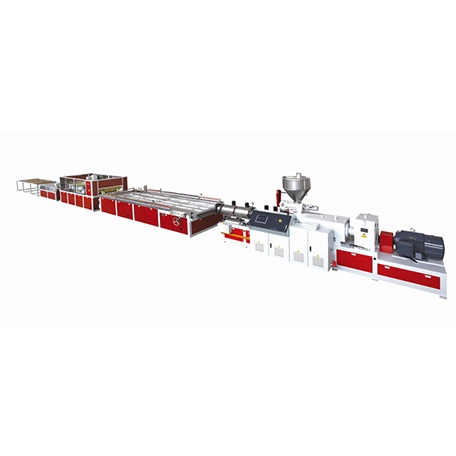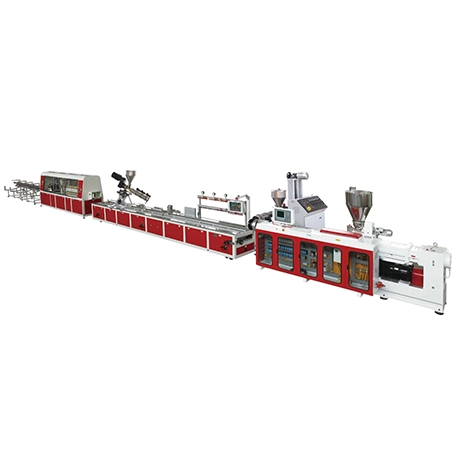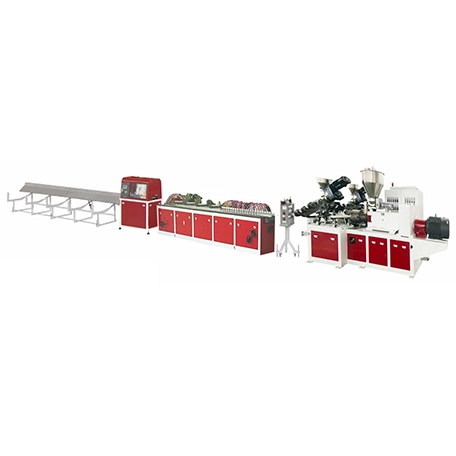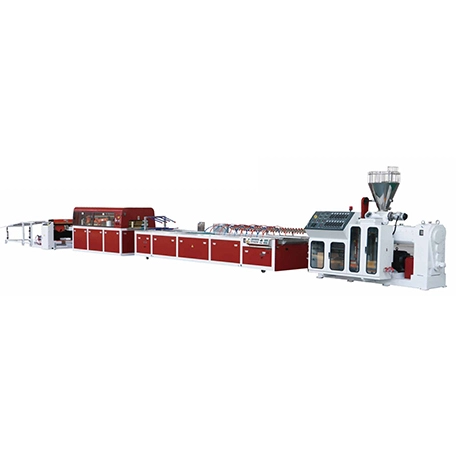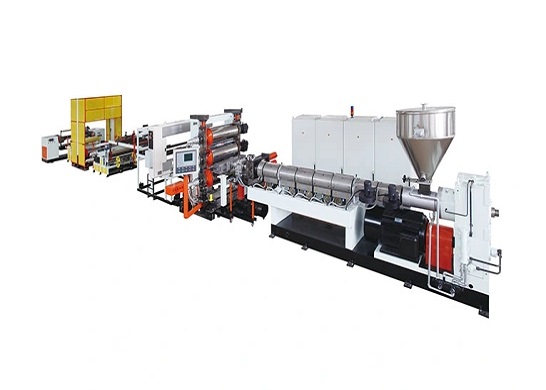A Profile Extrusion Machine is a sophisticated piece of equipment designed to transform thermoplastic materials into continuous shapes and forms, known as profiles. This process involves feeding plastic pellets or granules into the machine’s hopper, where they are melted and pushed through a die that shapes the molten plastic into the desired profile. The extruded profile is then cooled, solidified, and cut to length. This technology is pivotal in producing a wide array of products, including window frames, tubing, and various custom profiles, catering to industries ranging from construction to automotive. Its versatility and efficiency make it an essential tool in modern manufacturing.
Advanced Tech of Jwell Profile Extrusion Machine
Advanced technology in Jwell Profile Extrusion Machines has significantly enhanced their efficiency, precision, and versatility. Innovations such as computer-controlled systems allow for precise control over speed, temperature, and cooling, ensuring uniformity and quality of the extruded profiles. Co-extrusion techniques enable the production of profiles with multiple layers or materials, expanding their application range. Additionally, the integration of smart sensors and IoT connectivity facilitates real-time monitoring and adjustments, minimizing waste and downtime. These advancements not only improve the sustainability of the extrusion process but also enable the production of complex and high-performance profiles, meeting the evolving demands of industries.
Working Principle of Jwell Profile Extrusion Machine
The working principle of a Profile Extrusion Machine revolves around melting and shaping thermoplastic material into a continuous profile. Initially, plastic pellets are fed into the machine’s hopper, leading to the extruder barrel where they are heated and melted by a combination of the barrel’s external heating elements and the internal friction generated by a rotating screw. This molten plastic is then forced through a die that shapes it into the desired profile. As the extruded profile exits the die, it is cooled, often by air or water, to solidify the shape before being cut to length or coiled, resulting in the final product.

 EN
EN 
